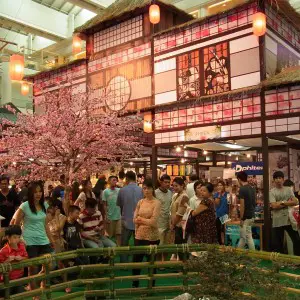 710 – The capital city is moved to Nara (Heijokyo). The administration tries to enforce the land tax system on the Taika Reform (which proves unsuccessful because of the exemptions granted to the monasteries and the noble families).
710 – The capital city is moved to Nara (Heijokyo). The administration tries to enforce the land tax system on the Taika Reform (which proves unsuccessful because of the exemptions granted to the monasteries and the noble families).
712 – “Kojiki” (“The Story about the Old Times”) is completed. “Kojiki” tells the history of Japan from its beginnings until 628. The officer O no-Yasumaro at the Empress Gemmei’s order makes it, after the information he had from a rhapsodist with an infallible memory. It is the oldest source regarding Japan’s traditions.
715 – The daughter of Gemmei, Gensho, becomes Empress.
720 – “Nihonshoki” (or “Nihongi”) – “Chronicles of Japan from the Earliest Time to 629 AD” is completed.
An army is raised from nine provinces to subdue the Ainu in the north and east. After long fighting a frontier post and garrison are set up in Taga (later called Sendai).
722 – Because of the increasing number of largely autonomous private estates (shoen) and the subsequent loss of rice tax because of the permanent residents in the city, the central government issues an order calling for three million new acres of land to be deforested and converted to rice growing. In return those who do the work are granted large concessions. Strong families thus start to accumulate land and power.
724 – Empress Gensho dies and Shomu becomes Emperor. (In order to reduce the threat to the throne, caused by factionalism among the strong court families during his reign, Shomu begins the practice of degrading some members of the imperial family. From this practice come Tachibana, Taira, and Minamoto families, among others.)
736 – Kegon Buddhism is introduced in Japan from China. (This branch of Buddhism is systematically called on to read protective sutras for the state when problems arise.)
738 – Todaiji temple is founded and serves as temple for the imperial family.
741 – The government provides funds to build some temples in which protective sutras can be read in times of emergency. Todaiji is the temple of the capital.
749 – The 1.6 m seated bronze image of Buddha is completed at Todaiji temple. Shomu holds the ceremony, in effect adopting the Buddhism as the court (and therefore state) religion.
Shomu abdicates in favour of Empress Koken (his unmarried daughter).
758 – Koken abdicates in favour of Emperor Junnin.
764 – Ex-Empress Koken disposseses and exiles the Emperor Junnin and resumes the rule as Empress Shotoku. (Dokyo, a monk, rises to be Grand Minister and Koken’s most trusted advisor. He is a very influent man until her death – at which time he is exiled by the Fujiwaras.)
770 – Shotoku dies. Dokyo makes an attempt to become the Emperor, but the court leaders resist this. Konin (Tenji’s grandson) is appointed Emperor by the Fujiwara family.
770-781 – The division between the countrypeople and the warrior class starts.
776 – The Ainu uprising (which continus until 790) destroys the garrison at Taga.
781 – Konin dies. At his death, the council of ministers refuses to allow a woman to become Empress. Kammu, Konin’s eldest son, becomes Emperor until 806. (The Taira families are descendants of the Emperor Kammu’s grandson, Takamochi.)
782 – Kammu decides to move the court and the capital to a new location, in order to escape the ever-increasing power of the Buddhist temples in Nara.
784 – The Capital city is moved to Nagaoka, about 30 miles from Nara in the province of Yamashiro.
791 – Sakanouye Tamuramaro is appointed deputy commander of the forces in the north-east. He is charged with the task of subduing the rebellious Ainu and of pushing the frontier further to the north.
792 – The system of universal military conscription is officially abolished. Each province is left to recruit their own armies within their province. These new forces are part of the noble land-holding families.
793 – Due to several major calamities, and the subsequent superstitious beliefs that these were caused by the choice of the capital location at Nagaoka, it is decided to move the capital again. The construction of a new capital is begun in Heiankyo (Kyoto), about 10 mile away from the old location.
To be continued: Heian Period

